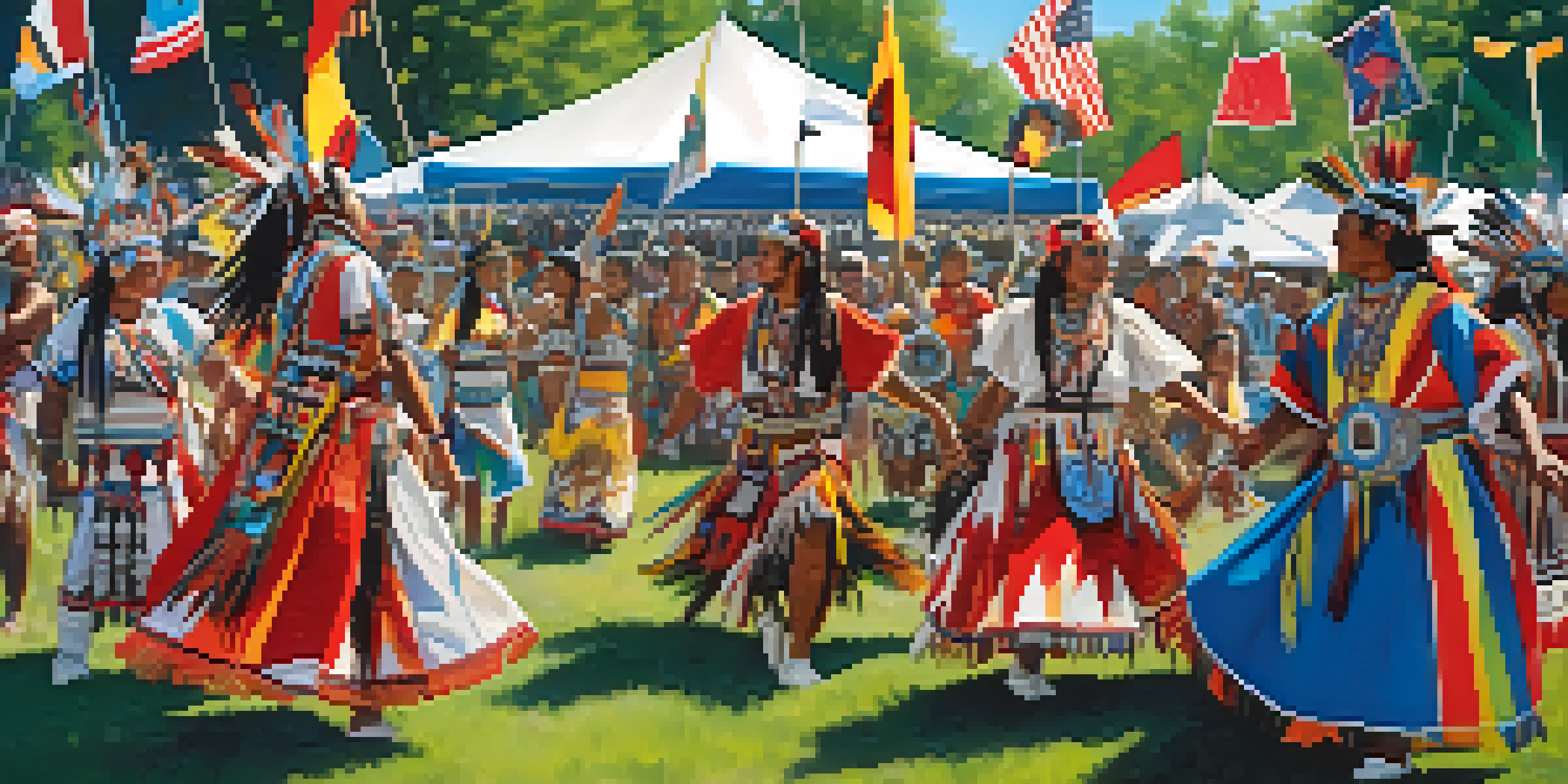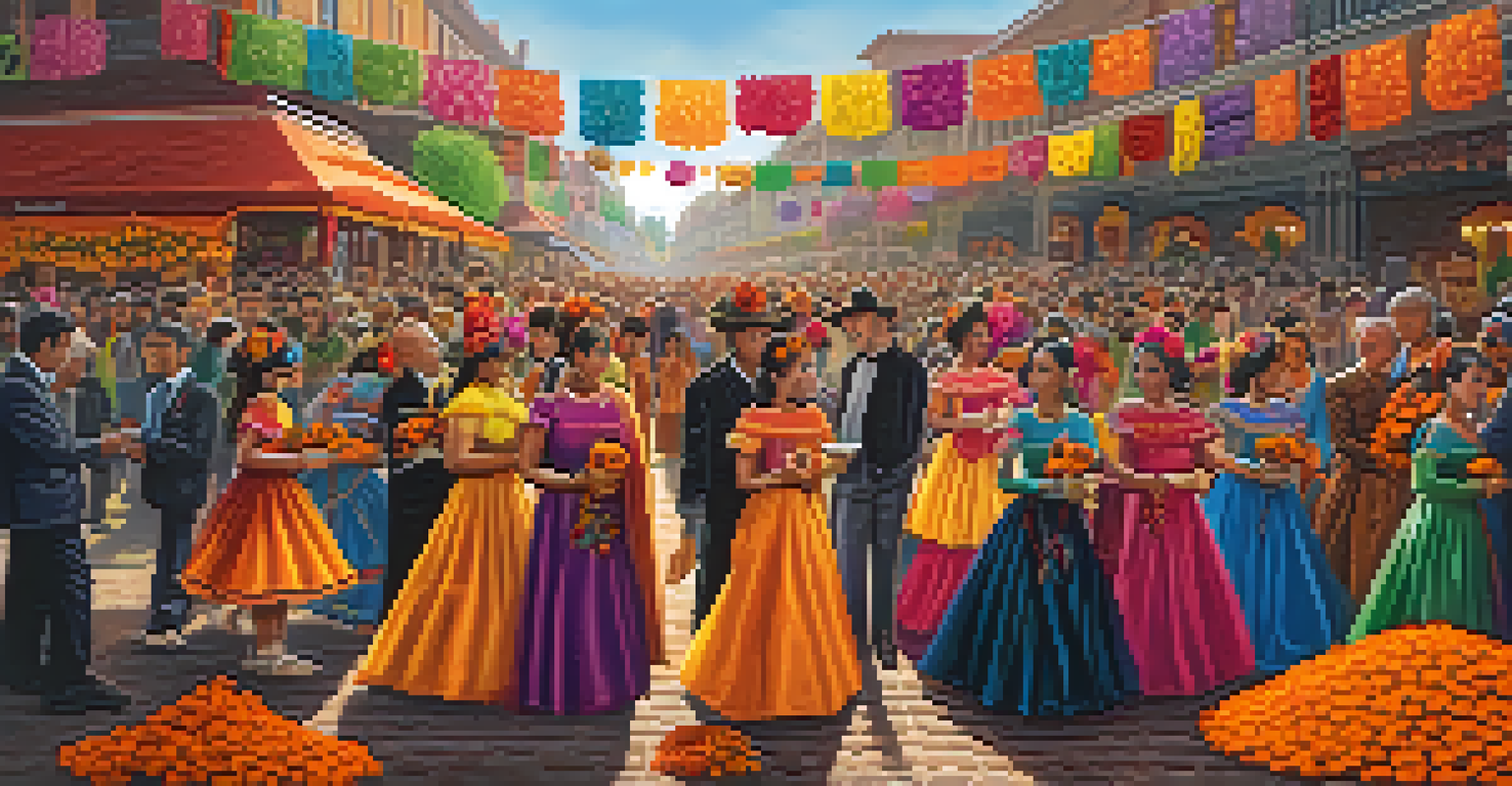Festivals of the Tribes: Celebrating Indigenous Heritage

Understanding Indigenous Festivals and Their Significance
Indigenous festivals are vibrant celebrations that reflect the rich heritage of tribal communities. They serve as a platform for storytelling, spirituality, and the passing down of traditions from one generation to the next. These events often feature dances, music, and rituals that hold deep cultural significance.
The preservation of our past is the foundation upon which we build our future.
For many tribes, these festivals are not just about celebration but also about connection—connecting with ancestors, nature, and community. They provide a space for individuals to express their identity and foster a sense of belonging. It’s a time when the community comes together to honor their history and embrace their future.
Understanding the significance of these festivals is crucial for appreciating the depth of indigenous culture. Each celebration is unique, tailored to the specific beliefs and practices of the tribe, making them a mosaic of cultural expression that captivates both participants and visitors alike.
Examples of Notable Indigenous Festivals Around the World
Across the globe, countless indigenous festivals showcase the diversity of tribal cultures. For instance, the Pow Wow in North America is a remarkable gathering that features traditional dance, music, and crafts, bringing together various tribes to celebrate their heritage. This event not only entertains but also educates participants about tribal histories and traditions.

In Australia, the Corroboree is a sacred gathering where Aboriginal communities come together to perform traditional songs, dances, and storytelling. It serves as both a celebration and a means to preserve cultural knowledge, allowing younger generations to learn from their elders in a vibrant and engaging manner.
Cultural Significance of Festivals
Indigenous festivals serve as vibrant celebrations that connect communities to their heritage, spirituality, and identity.
These festivals often attract visitors from around the world, offering an opportunity for cultural exchange and understanding. By participating, attendees gain insight into the values and customs of indigenous peoples, fostering respect and appreciation for their unique ways of life.
Cultural Preservation Through Festival Celebrations
One of the primary purposes of indigenous festivals is to promote cultural preservation. These celebrations allow tribes to showcase their traditions, languages, and art forms that might otherwise be at risk of fading away. Through dance, music, and storytelling, participants actively engage in keeping their heritage alive.
Cultural diversity is the world’s collective heritage, a wealth of wisdom and knowledge that needs to be preserved.
For example, the Day of the Dead in Mexico is not only a time to honor deceased loved ones but also a way to celebrate the rich cultural tapestry of indigenous beliefs. This festival reinforces the importance of family and community while keeping traditional practices vibrant and meaningful.
By participating in these festivals, both community members and visitors are reminded of the value of cultural diversity. It encourages a greater understanding and respect for the practices that have shaped indigenous identities over centuries, ensuring that these traditions continue to thrive.
The Role of Art and Craft in Tribal Festivals
Art and craft play a central role in indigenous festivals, serving as both a means of expression and a way to preserve cultural heritage. During these celebrations, artisans showcase their skills through traditional crafts, such as beadwork, weaving, and pottery, which tell stories of their cultural backgrounds. This artistic expression is often intertwined with the spiritual beliefs of the tribe.
For instance, during the Gion Matsuri in Japan, the intricate floats are not just visually stunning but also steeped in history and tradition. Each float tells a story, representing the community’s connection to their ancestors and the natural world. Visitors are often in awe of the craftsmanship and the deep meanings behind each piece.
Challenges Facing Indigenous Events
Many tribes encounter significant obstacles, such as funding and cultural appropriation, that threaten the authenticity and sustainability of their festivals.
These artistic displays not only enrich the festival experience but also educate attendees about the tribe's values and history. By purchasing or admiring these crafts, visitors can support indigenous artists and help sustain their cultural practices, fostering a deeper appreciation for their heritage.
Spiritual Aspects of Indigenous Festivals
Spirituality is often at the heart of indigenous festivals, influencing the rituals and ceremonies that take place. Many tribes believe that their festivals are a way to connect with the spiritual world, honoring ancestors and seeking blessings for the community. This connection can be seen in the various ceremonies that are performed during these events.
For example, the Sun Dance among the Plains tribes in North America is a powerful spiritual ceremony that involves fasting, dancing, and personal sacrifice. It is a time of renewal and connection with the Great Spirit, reflecting the tribe's deep respect for the natural world and its cycles.
By participating in these spiritual practices, communities reinforce their beliefs and values, creating a sense of unity and purpose. These festivals foster a communal spirit that transcends individual experiences, reminding everyone of the shared journey of life and the importance of honoring their spiritual heritage.
Challenges Faced by Indigenous Tribes in Celebrating Festivals
Despite the vibrancy and importance of indigenous festivals, many tribes face significant challenges in organizing and celebrating these events. Issues such as funding, cultural appropriation, and the impact of globalization can threaten the authenticity and sustainability of these festivals. Many tribes struggle to secure the resources needed to host these celebrations while maintaining their cultural integrity.
Additionally, cultural appropriation poses a challenge, as outsiders can sometimes misinterpret or exploit indigenous practices for profit. This can dilute the meaning of the festivals and lead to misunderstandings about their significance. It’s crucial for visitors to approach these events with respect and an understanding of their cultural context.
Future Opportunities for Festivals
The future of indigenous festivals holds promise through increased awareness, support, and technological advancements that help preserve and share cultural traditions.
By raising awareness about these challenges, we can support indigenous communities in preserving their festivals and culture. Engaging with tribes directly, respecting their traditions, and advocating for their rights helps ensure that these vibrant celebrations continue for generations to come.
The Future of Indigenous Festivals: A Path Forward
Looking ahead, the future of indigenous festivals is filled with both challenges and opportunities. As more people become aware of the importance of preserving indigenous cultures, there is potential for increased support and collaboration. This can lead to a revitalization of traditions and the growth of festivals that celebrate indigenous heritage in meaningful ways.
Technological advancements also offer new avenues for tribes to share their stories and celebrate their cultures. Virtual events, social media, and digital platforms can help tribes reach a wider audience, allowing people from all over the world to participate in and learn from these festivals, even from afar.

Ultimately, the future of indigenous festivals relies on a commitment to cultural preservation and respect from both the community and the broader public. By fostering genuine connections and supporting indigenous rights, we can ensure that these vibrant celebrations continue to thrive, enriching our shared human experience.